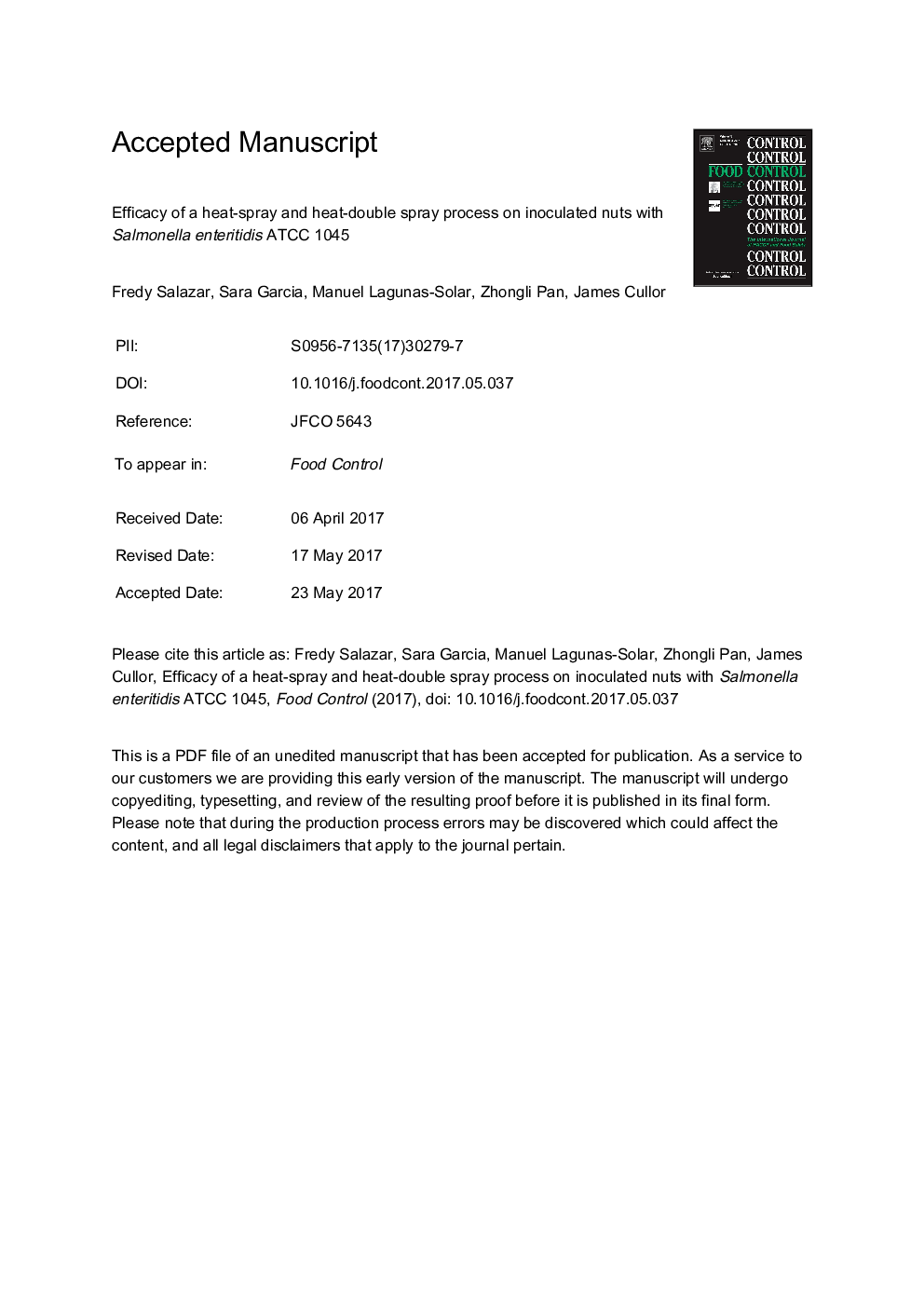| Article ID | Journal | Published Year | Pages | File Type |
|---|---|---|---|---|
| 5767181 | Food Control | 2017 | 18 Pages |
Abstract
Due to Salmonella outbreaks in almonds, regulatory standards have been established, requiring that almonds for human consumption in North America must achieve a minimum of 4 log10 CFU/g reduction of Salmonella. This study investigated a system using a combination of heating and transient application of ethanol to reduce bacterial load. This approach used a small scale heat-spray and heat-double spray process that included a two factor block design with heat (25±2 °C and 125±2 °C) and spray levels (0,1,2); One factor design with nut levels of almonds, pistachios, pecans, and walnuts for each heat-spray and heat-double spray process; a two factor experiment included a dip contact time (5s, 1800s) and ethanol evaporation time (5 s, 1800 s). Also, to evaluate the interaction of a heat-spray process on moisture content of almonds, a two factor design with levels of heat (25±2 °C and 125 ± 2 °C) and spray (0,1) was used. Additionally, the spray evaporation rate was evaluated. The heat-spray process shows additivity, while the heat-double spray process shows synergism. The heat-double spray process on almonds achieved a 6.1 mean log10 CFU/g reduction of Salmonella that was 35% higher than that of the heat-spray. For other nuts, the heat-double spray process led to a 4.8, 3.0, and 4.0 log10 reduction for pecan, pistachio, and walnut, respectively. The dip time (p < 0.05) had a greater effect than ethanol evaporation (p > 0.05) on log10 reduction of Salmonella in almonds. By applying ethanol 70%, the moisture increases by â¼0.5% w.b., whereas applying temperature decreases moisture by â¼2% w.b. The implication of these findings is that both the heat-spray and heat-double-spray process may be alternatives to the current almond disinfection processes in achieving a high log10 reduction.
Related Topics
Life Sciences
Agricultural and Biological Sciences
Food Science
Authors
Fredy Salazar, Sara Garcia, Manuel Lagunas-Solar, Zhongli Pan, James Cullor,
